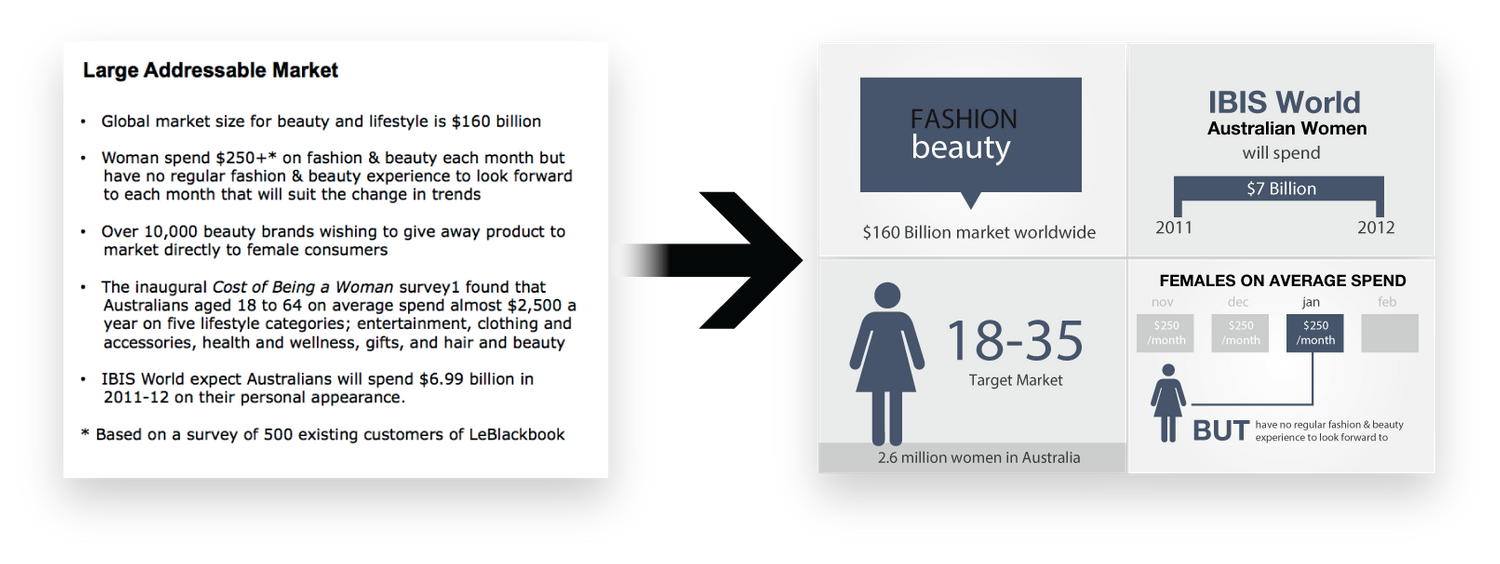Strategically Designing Powerful Narratives
{ "@context": "https://schema.org", "@type": "FAQPage", "mainEntity": [ { "@type": "Question", "name": "What is a pitch deck?", "acceptedAnswer": { "@type": "Answer", "text": "It’s a short presentation that explains your business idea to investors. It highlights your vision, product, market size, business model, and what you’re asking for (usually funding)." } }, { "@type": "Question", "name": "How many slides should I include?", "acceptedAnswer": { "@type": "Answer", "text": "Stick to 10–12 slides. Keep it tight, clear, and focused on the big picture. Add an appendix if you need to cover extra detail." } }, { "@type": "Question", "name": "Do I need to show financials if I don’t have revenue yet?", "acceptedAnswer": { "@type": "Answer", "text": "Yes. Even if you’re pre-revenue, include projections, funding needs, and how you’ll use the money. Investors want to see your thinking and plan." } }, { "@type": "Question", "name": "What’s the most important part of a pitch deck?", "acceptedAnswer": { "@type": "Answer", "text": "The Problem and Solution slides. If you can clearly show what problem exists and how your product solves it (better than others), you’re off to a good start." } }, { "@type": "Question", "name": "Should I include team bios?", "acceptedAnswer": { "@type": "Answer", "text": "Definitely. Investors invest in people. Highlight relevant experience and why your team can deliver." } }, { "@type": "Question", "name": "Can I just email the deck to investors?", "acceptedAnswer": { "@type": "Answer", "text": "If you do, make sure it’s self-explanatory. Use large fonts, clean layouts, and keep the story flowing without needing a voiceover." } }, { "@type": "Question", "name": "What’s a good slide order?", "acceptedAnswer": { "@type": "Answer", "text": "Start with a title slide, then go: Problem → Solution → Market Size → Product → Business Model → Traction → Competition → Team → Financials → The Ask." } }, { "@type": "Question", "name": "What is a sales presentation?", "acceptedAnswer": { "@type": "Answer", "text": "It’s a more structured, often live presentation where you show a buyer how your product or service can solve their specific problems. The goal is to move them closer to a decision." } }, { "@type": "Question", "name": "How is this different from a pitch deck?", "acceptedAnswer": { "@type": "Answer", "text": "A pitch deck is about selling the business to investors. A sales presentation is about selling a solution to customers. The focus is on outcomes, not ownership." } }, { "@type": "Question", "name": "How should I structure a sales presentation?", "acceptedAnswer": { "@type": "Answer", "text": "A solid structure is: 1. Intro (quick rapport) 2. Problem (customer pain) 3. Solution (your product) 4. Proof (case studies/data) 5. ROI (results they can expect) 6. Q&A or next steps" } }, { "@type": "Question", "name": "How long should a sales presentation be?", "acceptedAnswer": { "@type": "Answer", "text": "Aim for 20–30 minutes, plus time for questions. Be concise and respect your audience’s time." } }, { "@type": "Question", "name": "Should I personalise it for each prospect?", "acceptedAnswer": { "@type": "Answer", "text": "Yes. Always tailor the examples, language, and focus points to the buyer’s industry and challenges. The more relevant, the better." } }, { "@type": "Question", "name": "What kind of visuals work best?", "acceptedAnswer": { "@type": "Answer", "text": "Charts, before/after visuals, short customer quotes, and screenshots or demos work well. Keep slides uncluttered and clear." } }, { "@type": "Question", "name": "How do I close confidently?", "acceptedAnswer": { "@type": "Answer", "text": "Be direct. Recap the value, confirm interest, and suggest the next step—whether it’s a follow-up call, proposal, or pilot." } } ] }





























